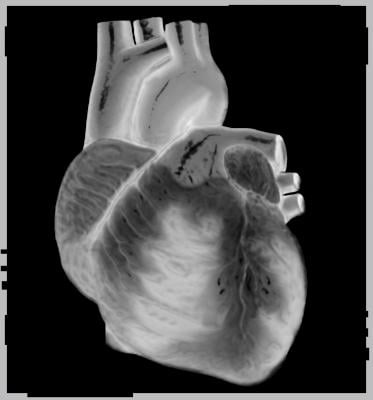
November 24, 2014 — Obesity is a known risk factor for atrial fibrillation (AFib), the most common heart rhythm disorder.
Obesity is commonly measured as a person’s body mass index (BMI), but a Loyola University Medical Center study has found that the layer of fat around the outside of the heart is more closely associated with atrial fibrillation than BMI.
“Many people who would not be considered obese by their BMI have high volumes of fat around their hearts, which could put them at risk for atrial fibrillation. Simple measures such as BMI may fail to completely inform us of a patient’s true cardiovascular risk,” says Mark Rabbat, M.D., first author of the study and an assistant professor of medicine and radiology, Division of Cardiology, at Loyola University Medical Center.
The study found a statistically significant correlation between the fat layer and scarring in the left atrium that causes atrial fibrillation. By contrast, there was not a statistically significant correlation between BMI and scarring in the left atrium of the heart.
AFib, occurs when the atria fibrillate. AFib is thought to be caused by inflammation and scarring (fibrosis) in the left atrium.
New innovations in cardiac magnetic resonance imaging enable physicians to precisely measure both epicardial adipose tissue (EAT) volume and the amount of fibrosis in the left atrium.
The study included 54 patients who had AFib. The average amount of fat around the heart (EAT volume) was 120 cubic centimeters. There was a statistically significant correlation of 0.45 between EAT volume and fibrosis. By comparison, there was only a 0.30 correlation between BMI and fibrosis – and this lower correlation was not statistically significant.
For many years, EAT was believed to be harmless, inert fat tissue, but it now appears that EAT is a metabolically active organ, releasing proteins that may trigger the fibrosis that causes AFib.
Weight loss, either through diet and exercise or through weight-loss surgery, has been shown to reduce the amount of EAT, but current medical treatments fail to specifically target EAT.
Rabbat remarks: “Fat tissue around the heart may be a novel target to reduce the risk of a-fib and its recurrence.”
The study is titled "Epicardial adipose tissue volume predicts extent of left atrial fibrosis in patients with atrial fibrillation."
Other co-authors of the study, all at Loyola, are Bassel Sayegh, M.D.; Andrew Stiff, M.D.; Brian Vetter, MS; Kim Chan, MBBS; Tonye Teme, M.D. and senior author David Wilber, M.D.
For more information: www.loyolamedicine.org


 April 16, 2024
April 16, 2024 








